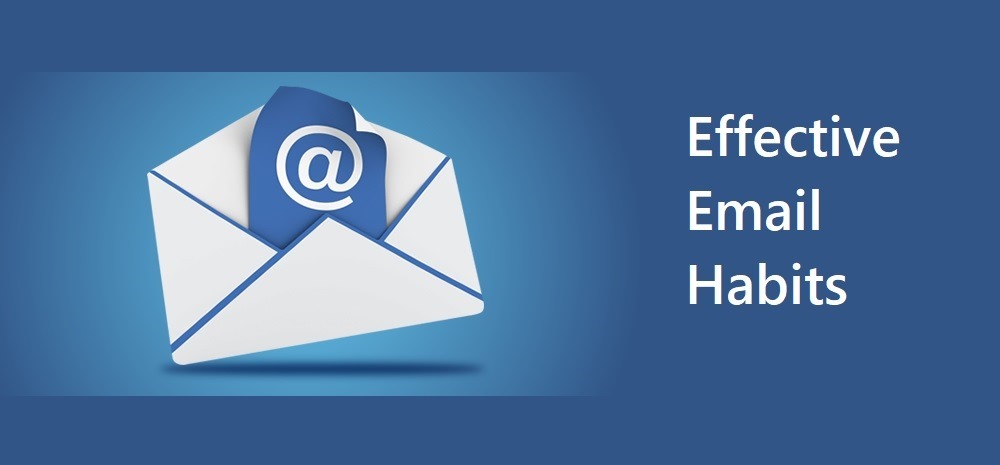10 Email Habits You Need to Change Right Now; Plus, Tips to Manage Inbox Smartly
Master the use of email and make it work for you in an effective way.

210 Billion emails are sent and received every day. With that number, we can just about make out, how emails have become an integral part of our professional lives.
Being the most important tool of official communication, there is huge difference between a well-written email and a normal mail. Emails need to be written smartly to grab attention and elicit a quick response.
Contents [hide]
Here are 10 Such Email Habits that You Need to Change Right Now
1. Not Replying to Emails That Require Replies
How annoying can it be, if you ask someone a thing and you don’t get a response! This creates a state of confusion and stress. If someone is expecting a response through an email, please respond. Depending on the subject, it may take up some amount of your time, but it will keep the person at the other end happy that someone’s paying attention to them.
2. The Blank Subject Line
When you don’t provide a subject line, the receiver of the email has no idea why you are mailing them. In today’s time-strapped world, such email is simply going to get ignored or possibly even deleted. An email without a subject is seen as spam, and will get you added to the spam list.
3. Error-Filled Emails
Try not to send an email without running the spell check first or reading over at least once more. Sending an error-filled mail could prove to be a costly mistake. What you need to understand is that your email speaks a lot about you. So, sending emails filled with erroneous sentences or bad grammar, just shows the reader that you don’t care enough.
4. The ALL-CAPS Email
Avoid this like the plague. Using CAPITAL LETTERS for all words, sends wrong signals, that you are either angry or screaming at the reader.
5. No Texting Lingo in Emails
Emails are not texts. So don’t use the LOLs, BTWs or FYIs. The texting lingo you use in your text messages should be restricted to texts only. Please remember that, though an email is communication, it is a formal means of professional communication. Your smart abbreviations aren’t required here!
6. The One Paragraph Email
If it’s a very short email, then it’s alright. But writing a lengthy email in one paragraph is a bad idea. The email has to be structured with appropriate paragraphs. Emails have to be composed like the business letters where they have clear introduction, proper body and imminent conclusions. A one-paragraph email makes it hard for the receiver to read, as it doesn’t provide any visual breaks.
7. Don’t Reply to All
Email is not WhatsApp. Email is a professional communication medium. In case you are responding to an email which has been sent out to a group, be extra careful before you hit ‘Reply All’. Take some time to think whether your reply is actually necessary for everyone.
8. Vague Subject Line
Using a ‘Hey’ or ‘Wassup’ will not provide the recipient any indication or idea of what the contents of the email are. The outcome? They are less likely to open such a vague email. An email’s subject needs to be clear and concise. It should provide some clues to the recipient about the contents of the email and encourage them to at least open and read it.
9. Marking Emails Unnecessarily as‘Urgent’
If an email is really urgent, just hit that priority button. Remember the story of the boy who cried wolf one too many times? You are going to end up like that. If you are continuously going to send emails marked “urgent”, regardless of whether they are or are not, eventually the recipients will stop taking you seriously. So use that ‘Priority’ button judiciously.
10. One Line Responses
Replying with just a ‘Thank You’ or ‘OK’ does not advance the conversation in any way. It’s not that you have to answer every email, but if you do reply to an email, respond properly. From your side, if you do not expect any response, just click on‘no reply necessary’ at the top of the email.
How to Manage Your Email Inbox Smartly?
Most of us have a cluttered inbox, loaded with old, unopened or unimportant emails. These distract us from the emails which are actually important. These could be a potential source of frustration. Here are some simple steps to keep your inbox clean and sorted.
Step 1. Take out time to read and respond to emails
Keep aside a few minutes of the day to properly read and respond to your emails.
Step 2. Take Action Immediately
Don’t delay. If you see an unwanted email, delete it straightaway or if there’s a mail you need to reply, do it instantly, but carefully.
Step 3. Add Labels, Folders and Categories
Organize your emails, by adding Labels, Folders and Categories. This gives your cluttered inbox a clear shape.
Step 4. Unsubscribe from Unwanted Promotional Mails and Newsletters
Unsubscribe from all kinds of unwanted promotional mails and the useless newsletters, which choke up the inbox unnecessarily.

I think the most common mistake that people do is explaining many thoughts in one email. The email should be short and simple. You can’t a right big paragraph in reply. No one has interest or time to check your long length email. so keep it simple and write on the point that you want to say to that person.
Thank you